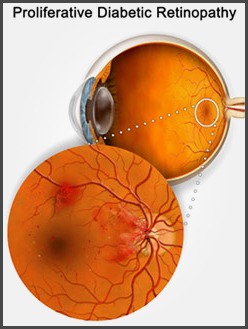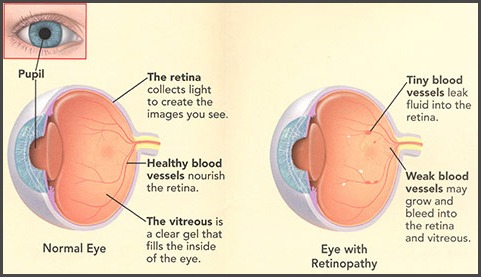About seven per cent of the Australian population over 25 years of age have diabetes, increasing to about 24 per cent of people over 75 years of age. Of these, more than 70 per cent will develop some changes in their eyes within 15 years of diagnosis. Optometrists play a fundamental role in diagnosing these conditions in their early stages when they respond best to treatment.
Often the first signs of Diabetes can show up in the eye with fluctuations in the ability to focus day to day. The problem eases when blood glucose levels are well controlled. Diabetes can also cause more dangerous changes in the eyes, primarily through its effects on the blood vessels in the retina.

The blood vessels in the retina are particularly susceptible to damage with diabetes after it has been present for a number of years. These changes are known as diabetic retinopathy. There are two main types of this condition: non-proliferative (sometimes called background) retinopathy and proliferative retinopathy. The risk of developing retinopathy increases with the length of time you have had diabetes and when blood glucose levels are not well controlled over time.
Non proliferative retinopathy rarely causes any vision to be lost and therefore does not require treatment. Occasionally a swelling of the retina may cause hazy vision or straight lines to appear bent. Beckenham Optometrists – Rowena and Valerie may instruct you in a simple procedure to carry out at home so that you can test your eyes for this condition. If vision is affected in this way they can confirm its cause and will refer you for appropriate treatment.

Proliferative retinopathy is more serious and requires early treatment to prevent serious vision loss. Once proliferative retinopathy has been diagnosed, you will be referred to a retinal specialist for further appraisal and treatment.
Controlling blood glucose over time significantly reduces the risk of developing retinopathy, but does not eliminate it. It is advisable for all people with diabetes to have yearly eye examinations. People who have been diagnosed as having retinopathy should have eye examinations more frequently than once a year. In addition, regular visits to the general medical practitioner and/or the endocrinologist may help to control blood glucose levels.




